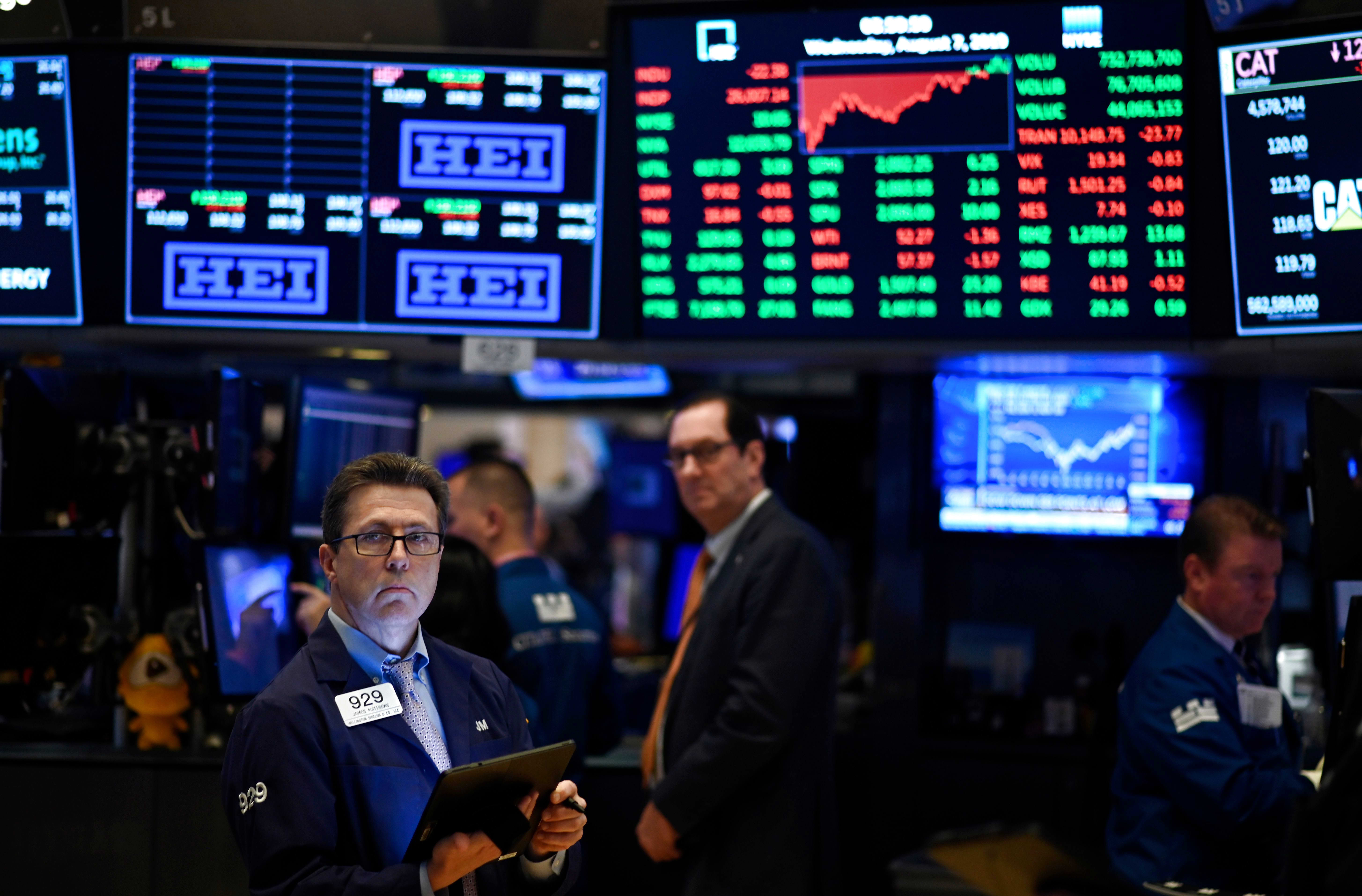Traders work after the closing bell at the New York Stock Exchange (NYSE) on August 7, 2019 in New York City. – Wall Street stocks finished little changed on August 7, 2019, following a choppy session as a plunge in treasury bond yields early in the day underscored worries about a weakening global economy.
JOHANNES EISELE | AFP | Getty Images
Big U.S. banks J.P. Morgan Chase, Bank of America and Citigroup will benefit from a rebound in trading revenue in the fourth quarter, but that might matter less than what executives say about this year’s guidance.
Last month, executives at the three banks all cited increased trading results in the final three months of 2019. J.P. Morgan CFO Jennifer Piepszak said trading would be “meaningfully” higher versus a year ago, while Citigroup CFO Make Mason said it would rise by a percentage “in the high teens.” Bank of America CEO Brian Moynihan said markets revenue would be 7% to 8% higher than a year earlier.
The rebound comes from banks’ fixed-income trading operations, projected to rise 25% on average, versus a 3% bump in stock trading revenue, KBW analyst Brian Kleinhanzl wrote last month.
J.P. Morgan, Citi and Wells Fargo will release results Tuesday morning, while Goldman Sachs and Bank of America will post on Wednesday, and Morgan Stanley on Thursday.
Bank stocks finished 2019 on a tear, outpacing the broader stock market in the fourth quarter as investors rushed into an under-owned sector. The biggest U.S. banks climbed more than 30% on average last year, exceeding the gain of the Standard & Poor’s 500.
But banks may face pressure this year as interest rates stay low or are even slashed further. The Federal Reserve cut its benchmark rates for the third time in October, and that pressures net interest income, or the revenue that banks garner from collecting loan payments, minus the interest it pays to depositors.
So it makes sense that analysts and investors are keen to hear management give guidance for 2020, particularly on net interest income and the impact of rates, as well as about expenses and loan growth.
“We expect the 2020 outlooks to garner more attention than actual results,” Barclays analyst Jason Goldberg said in a research note this week.
In fact, new guidance is expected from Goldman Sachs as it nears its first-ever investor day this month and CEO David Solomon explains the results of his year-long internal review. And new Wells Fargo CEO Charles Scharf will address analysts for his first earnings report and may speak about the strategic review he has undertaken.
With that looming over lenders, analysts have been busy cutting their recommendations on big banks whose shares have outperformed last year, including J.P. Morgan, Bank of America and Citigroup. Several analysts upgraded Goldman Sachs on its reasonable valuation, the potential settlement of its 1MDB scandal with the U.S. government and its growth initiatives.
The fourth quarter is typically when banks announce unexpected charges or expenses, Goldberg noted. Banks may also begin grappling with a new accounting rule called credit loss accounting that may result in one-time hits to reserves.
